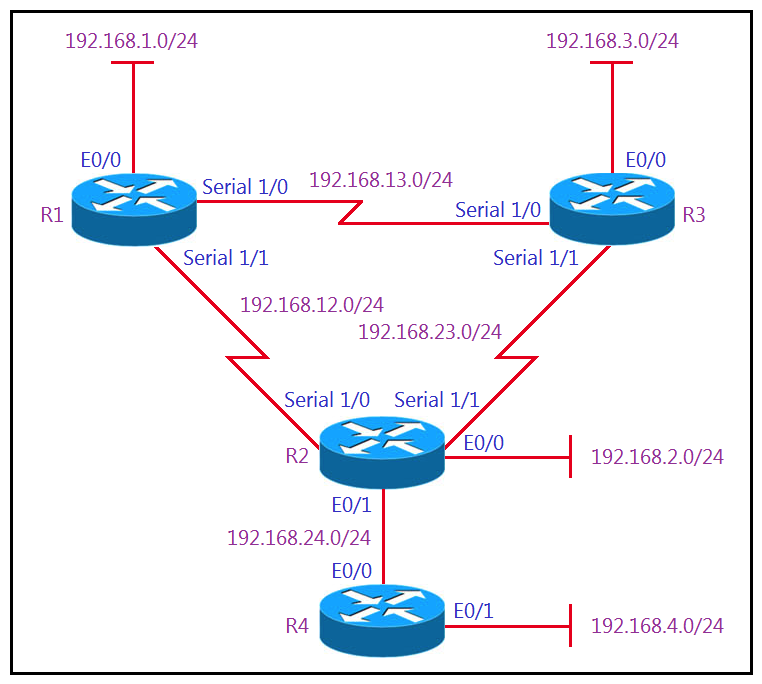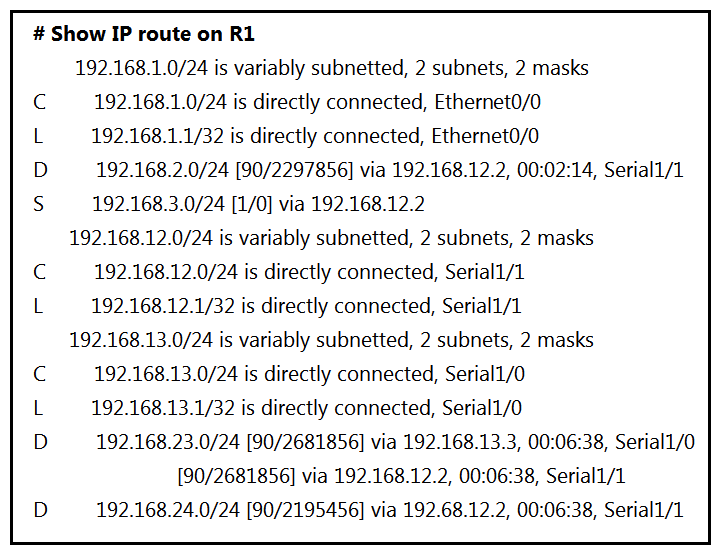Multiple Choice

 Refer to the exhibits. All the serial links between R1, R2, and R3 have the same bandwidth. Users on the 192.168.1.0/24 network report slow response times while they access resources on network 192.168.3.0/24. When a traceroute is run on the path, it shows that the packet is getting forwarded via R2 to R3 although the link between R1 and R3 is still up. What must the network administrator do to fix the slowness?
Refer to the exhibits. All the serial links between R1, R2, and R3 have the same bandwidth. Users on the 192.168.1.0/24 network report slow response times while they access resources on network 192.168.3.0/24. When a traceroute is run on the path, it shows that the packet is getting forwarded via R2 to R3 although the link between R1 and R3 is still up. What must the network administrator do to fix the slowness?
A) Add a static route on R1 using the next hop of R3.
B) Remove the static route on R1.
C) Change the Administrative Distance of EIGRP to 5.
D) Redistribute the R1 static route to EIGRP.
Correct Answer:

Verified
Correct Answer:
Verified
Q75: Which method changes the forwarding decision that
Q76: <img src="https://d2lvgg3v3hfg70.cloudfront.net/C1178/.jpg" alt=" Refer to the
Q77: An engineer configured the wrong default gateway
Q78: <img src="https://d2lvgg3v3hfg70.cloudfront.net/C1178/.jpg" alt=" Refer to the
Q79: <img src="https://d2lvgg3v3hfg70.cloudfront.net/C1178/.jpg" alt=" Refer to the
Q81: <img src="https://d2lvgg3v3hfg70.cloudfront.net/C1178/.jpg" alt=" Refer to the
Q82: <img src="https://d2lvgg3v3hfg70.cloudfront.net/C1178/.jpg" alt=" Refer to the
Q83: <img src="https://d2lvgg3v3hfg70.cloudfront.net/C1178/.jpg" alt=" Refer to the
Q84: <img src="https://d2lvgg3v3hfg70.cloudfront.net/C1178/.jpg" alt=" Refer to the
Q85: While working with software images, an engineer